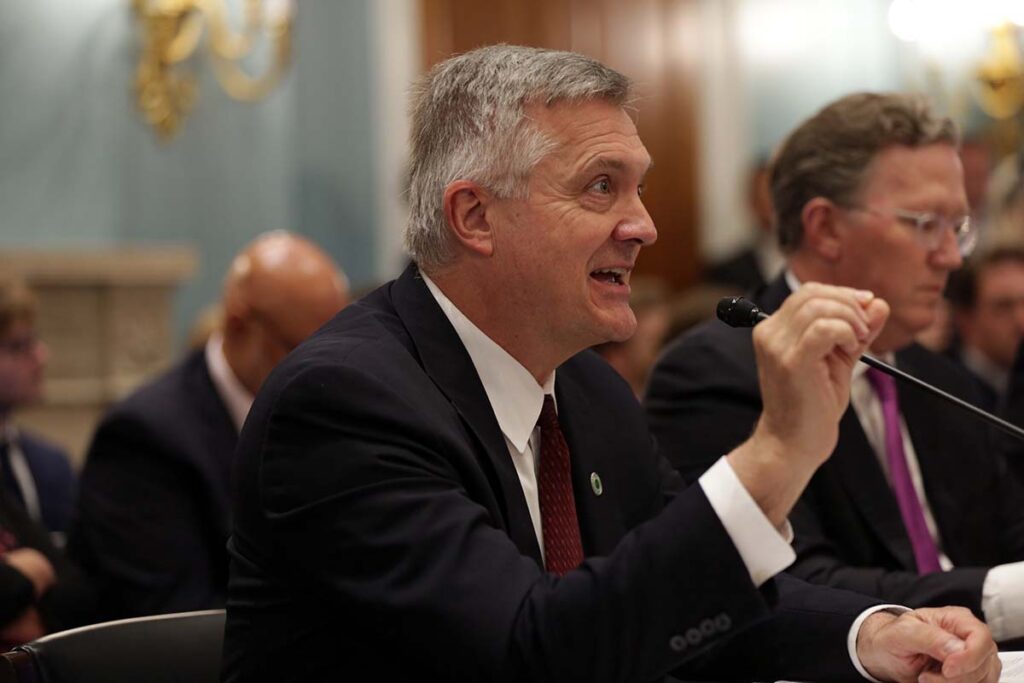
Electric cooperatives need Congress to improve critical broadband programs to bring high-speed internet service to rural America, NRECA CEO Jim Matheson told a House panel Wednesday.
More than 200 electric co-ops across the U.S. are deploying broadband or developing plans to do so.
“An affordable and reliable internet connection is critical for the growth and development of rural America,” Matheson told the House Agriculture Committee, which is crafting a new five-year Farm Bill that will authorize broadband funding.
“Broadband is no longer a luxury, but instead a necessity for business, education and health care access across the country,” he testified at a hearing on closing the digital divide. “Without these connections, families may choose not to return to the small towns where they grew up, businesses choose to locate elsewhere, and farmers struggle to access the latest technologies that help lower input costs and improve yields.”
Matheson asked the committee to make key improvements to broadband programs at the U.S. Department of Agriculture as it develops the Farm Bill:
- Make the ReConnect program permanent and easier to access.
- Provide robust funding for rural broadband through USDA.
- Prioritize symmetrical speeds and scalable networks in any future rounds of federal funding.
- Invest in middle mile infrastructure.
Matheson noted that the committee last year advanced the Broadband Internet Connections for Rural America Act to make the ReConnect program permanent. ReConnect provides grants and loans to fund the construction, improvement or acquisition of facilities and equipment needed to provide broadband service in rural communities.
As Congress continues to consider that bill and other legislation, co-ops have recommendations about what the focus should be, Matheson said.
“Congress must prioritize scalable, future-proof networks in any future rounds of federal funding,” Matheson said. “Without the ability for networks to grow in response to increased bandwidth needs and consumer demands, the challenge of solving the broadband gap in rural America will persist.”
He said the definition of an area that is unserved by broadband should be expanded to include communities that lack speeds of at least 100 megabits per second for both data uploads and downloads.
“Building networks in low-density, hard-to-reach areas is challenging, but Congress must prioritize networks that can meet consumer demand and ensure that residents in these areas are able to receive quality service regardless of whether they are considered unserved or underserved,” Matheson said.
He said the ReConnect program must be streamlined.
“The ReConnect application process is time consuming and difficult,” Matheson said. “The submission portal is not user friendly, and some have commented that attempting to fill out the program application is like having a second job. For small providers with limited resources, this is incredibly challenging and can be prohibitive.”
The national broadband map created by the Federal Communications Commission still does not accurately show which rural communities are receiving adequate service, he said.
“Despite significant progress in improving the map’s accuracy over the past six months, it is clear that there are still discrepancies between what the map displays and the realities on the ground,” Matheson said. “The continued reliance on advertised speeds instead of actual speeds opens the door to gamesmanship with mapping data and could prevent rural areas from receiving a high-speed internet connection.”
Erin Kelly is a staff writer for NRECA.